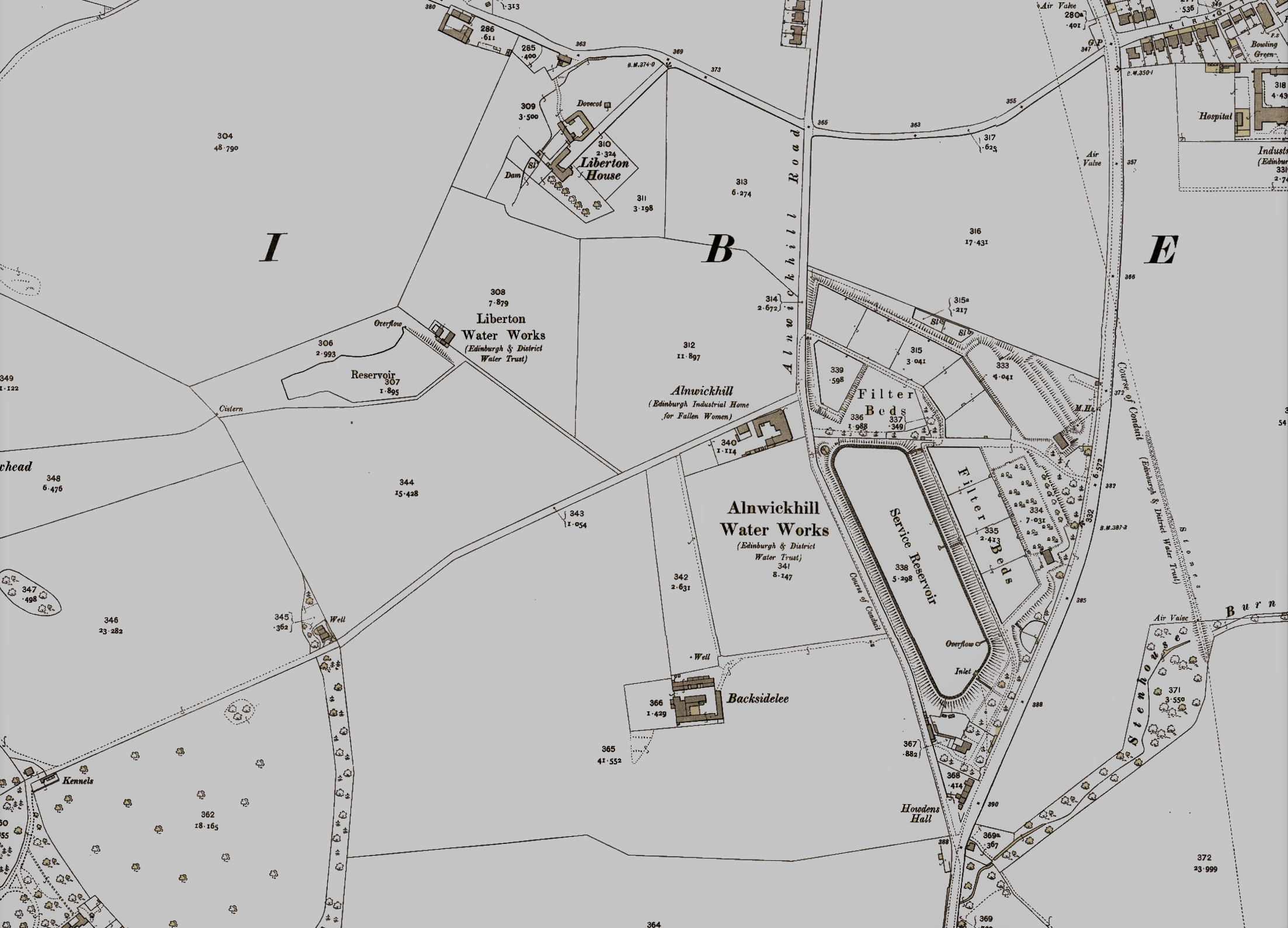George Good, author of the book “Liberton in Ancient and Modern Times” printed in 1893, mentions that this was the site of the first Lunatic Asylum in Scotland. Although the current building was erected in 1891 as a purpose built home for fallen women, a building had stood on the site for many years before this time. The land belonged to the Little Family of Over Liberton, whose family properties included Liberton Tower and Liberton House, sometimes referred to as the Place of Liberton.
The earliest records show that Warrock Smith and his wife Beatrix used the building as a private lunatic asylum in the late 1700s, and that he died on 18th December 1811, and was buried in Liberton Churchyard. The 1794 Estate Map shows that the house was called Stoneydykehead, sitting in Stoneydyke Park. From about 1820, the house was occupied by a series of tenants, and suggests that the patients had by then been transferred to the asylum at Morningside. The 1841 census shows that it was the home of George Boyd, one of the brothers of the famous printing company of Oliver & Boyd. The census seems to suggest that he lived in part of the house, and Alexander Cummings and his wife Marion lived in another part.
The Royal Edinburgh Hospital was built by Dr Andrew Duncan at Morningside in 1813, after he had witnessed the harsh treatment given to his friend, the poet Ferguson, in a private asylum. This purpose built hospital opened to paying guests only, until in 1840 it began to admit paupers. Prior to dedicated hospitals, normal hospitals such as Edinburgh Royal Infirmary, took in a few “lunatics”, but they were always housed in the basement, and many were chained up at night. Before the private asylums, the church authorities supported what were called lunatics, although the records tend to show that many of these people had been professionals, perhaps we would say today that they may have been suffering form Dementia or from Alzheimer’s disease.
The Rev James Begg

The Sasine register of August 1850 shows that Alnwick Hall was transferred from Robert Reid to James Begg, formerly minister of Liberton Kirk until he joined the Free Church in 1843. The 1851 census has James Begg living there with his family and a few servants, and the valuation rolls for 1855-58 records that the Begg family were still living there then.
The Sasine register for 23rd August 1858 shows that the house passed from James Begg, into the hands of John Cowan of Valleyfield Paper Mill at Penicuik, and mentions in addition a dwelling house, stable and other buildings. The valuation roll for 1858-9, shows that John Cowan was still there. The valuation roll for 1859-60 shows that the house is now a Reformatory for Fallen Women. The 1861 census shows that Agnes Nelson aged 48, born in Penicuik was the matron, probable founder, and a former missionary, was living in the house together with 22 others. The 1871 and 1881 census records show that the house had the same matron, 6 staff and 30 of what were termed “inmates”. The current building was purpose built in 1891 by Robert Wilson as a home for ‘fallen women’.
Some old documents show that the house was a part of Liberton Park Dyke.

Map of Alnwickhill circa 1905, Copyright GLHG
John Rennie & Alison Macdonald,
Greater Liberton History Group
Sources
1. Good, George, Liberton in Ancient and Modern Times
2. National Records of Scotland, Craigmillar Papers, with thanks to Sir David Gilmour
3. Ancestry.com
4. Wikipedia